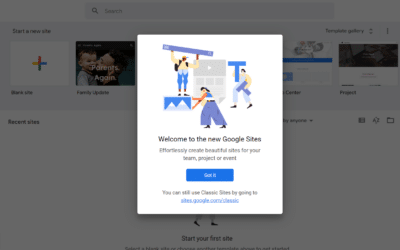How to write SEO Proposal for Clients
You know that feeling when you’ve poured your heart and soul into an SEO proposal, only to hear crickets from the client? It’s like being stuck in a bad rom-com where the love interest just isn’t picking up what you’re putting down. But fear not, my friend! I’ve been there, done that, and I’m here to share my secrets on how to make an SEO proposal that will have clients swooning at your feet.
First things first, let’s talk about what makes a killer SEO proposal. It’s not just about throwing in some fancy jargon and calling it a day. Oh no, it’s about showing your potential client that you understand their unique needs and have the skills to deliver real results. So, how do you do that? Well, buckle up buttercup, because I’m about to take you on a journey that will transform the way you approach SEO proposals forever.
How to write SEO Proposal for Clients
Alright, so you know the key elements of a winning SEO proposal and the benefits of using a template. But how do you actually go about creating one? Here’s my step-by-step process:
Conducting a Thorough Client Evaluation and Initial Audit
Before you even think about putting together a proposal, you need to do your due diligence. That means conducting a thorough evaluation of the potential client’s current online presence and SEO performance.
Some key areas to assess:
- Website structure and technical SEO issues
- On-page optimization (titles, meta descriptions, header tags, content)
- Backlink profile and domain authority
- Organic search traffic and keyword rankings
- Competitor analysis and benchmarking
Tools like AgencyAnalytics and SEMrush can give you a wealth of insights here. The goal is to identify areas of opportunity and key issues to address in your SEO strategy.
Identifying SEO Objectives
Once you have a solid understanding of the client’s current SEO situation, it’s time to define clear, measurable objectives for your SEO campaign. And I’m not just talking about vanity metrics like rankings or traffic.
To really demonstrate the value of SEO, you need to tie your objectives directly to the client’s broader business goals. Are they looking to increase online sales? Generate more leads? Improve brand awareness and thought leadership?
Work with the client to identify the specific, quantifiable outcomes they’re hoping to achieve with SEO. Then, translate those into actionable campaign goals – like increasing organic traffic by X% or improving conversion rates from organic search by Y%.
Creating a Tailored SEO Strategy
This is where you’ll outline the specific SEO services, tactics, and deliverables you propose to help the client meet their objectives. Your strategy should be tailored to their unique needs, budget, and competitive landscape.
Some key components to consider:
- On-page optimization and content creation/optimization
- Technical SEO improvements (site speed, mobile friendliness, crawlability)
- Link building and digital PR
- Local SEO and Google My Business optimization
- Ongoing monitoring, reporting, and strategy adjustments
Be as specific as possible here – outline exactly what you’ll do, how you’ll do it, and the expected impact on the client’s SEO performance. Use data and case studies to back up your recommendations whenever possible.
Utilizing SEO Templates for Efficiency
As I mentioned earlier, SEO proposal templates can be a huge time-saver when creating client proposals. Look for templates that cover all the essential elements we discussed, like:
- Executive summary and introduction
- Client goals and objectives
- SEO audit findings and competitive analysis
- Proposed strategy and deliverables
- Timeline and milestones
- Investment and pricing
- Case studies and social proof
- Next steps and call-to-action
With a solid template in hand, you can focus your time and energy on personalizing the proposal for each client, rather than starting from scratch every time.
Writing an Engaging Executive Summary
Your executive summary is your chance to hook the client and get them excited about the potential of working with you. It should be concise (aim for a page or less), compelling, and highly skimmable.
Summarize the key points you’ll cover in the proposal, including:
- The client’s current SEO challenges and opportunities
- Your proposed solution and the specific results you expect to achieve
- Why your agency is the best fit for their needs
- The investment required and expected ROI
Think of it as a teaser for the rest of your proposal – you want to pique their interest and leave them eager to dive into the details.
Outlining the Scope of Work and Deliverables
In this section, you’ll get into the nitty-gritty of what your SEO services will entail. Break your strategy down into specific deliverables and milestones, so the client knows exactly what they can expect from your engagement.
For example, your deliverables might include:
- A comprehensive SEO audit and strategy document
- X number of optimized pages per month
- X number of new blog posts per month
- Monthly link building and outreach (X number of links)
- Ongoing technical SEO monitoring and improvements
- Monthly reporting and strategy calls
Be as specific as possible here – the more clearly you can define the scope of work, the better. This helps set clear expectations and avoid scope creep down the line.
Setting Clear Timelines
SEO is a long-term game, and it’s important to set realistic expectations with clients about the timeline for results. In your proposal, include a clear timeline outlining when the client can expect to see progress and milestones.
For example:
- Month 1: SEO audit, strategy development, and initial on-page optimizations
- Month 2-3: Content creation and optimization, link building kick-off
- Month 4-6: Continued optimization and link building, expect to see initial ranking and traffic improvements
- Month 6+: Ongoing SEO maintenance and growth
Of course, the specific timeline will vary depending on the client’s industry, competition, and budget. The key is to set expectations upfront and communicate regularly about progress.
Listing Pricing Options
Finally, it’s time to talk pricing. I recommend providing a few different pricing options or packages based on the client’s budget and needs. This could include:
- A basic package with the essential SEO services
- A more comprehensive package with additional services and faster results
- A custom package tailored to their specific needs
Be transparent about what’s included in each package and the expected results. And don’t forget to emphasize the value and ROI of your services – remember, SEO is an investment, not a cost.
What Is an SEO Proposal?
Want to win more SEO clients? It all starts with a killer proposal.
An SEO proposal is your chance to showcase how you can skyrocket a potential client’s online visibility and search engine rankings. It’s essentially your sales pitch, outlining the strategies and services you’ll implement to help them dominate the search results.
I’ve been in the SEO game for over a decade now, and I can tell you firsthand – a well-crafted SEO proposal is the key to landing those dream clients. It’s your opportunity to highlight your expertise, demonstrate your value, and get them excited about the incredible results you can deliver.
But here’s the thing – creating an SEO proposal that truly wows potential clients is no easy feat. It takes a deep understanding of their business, their goals, and the unique challenges they face in their industry. You need to do your homework and come prepared with a highly-personalized, data-driven plan of action.
Key Elements of an Effective SEO Proposal
So, what separates an average SEO proposal from one that has clients eagerly signing on the dotted line? Here are the key elements I always include:
- A thorough analysis of their current SEO performance, including website audit insights and competitor benchmarking
- Clear, measurable goals tied to their business objectives (think traffic, leads, revenue)
- A detailed strategy outlining the specific SEO services and tactics you’ll employ to achieve those goals
- A timeline of deliverables and milestones so they know exactly what to expect
- Transparent pricing and your process for reporting on results
When you can demonstrate that you truly understand their business, have a proven plan to deliver measurable results, and can communicate that value effectively – that’s when the magic happens.
Benefits of Using an SEO Proposal Template
Now, I know what you might be thinking – creating a highly-customized proposal for each potential client sounds time-consuming. And you’re not wrong. That’s why I’m a big advocate for using SEO proposal templates.
With a solid template in place, you can streamline the proposal process while still delivering a personalized, professional pitch. It ensures you don’t miss any crucial elements, keeps your branding and messaging consistent, and saves you a ton of time in the long run.
Of course, the key is to use the template as a starting point, not a copy-paste crutch. You still need to invest the time and effort to tailor each proposal to the specific client and their unique needs. But trust me, having that framework in place is a game-changer.
What Is an SEO Proposal?
Want to win more SEO clients? It all starts with a killer proposal.
An SEO proposal is your chance to showcase how you can skyrocket a potential client’s online visibility and search engine rankings. It’s essentially your sales pitch, outlining the strategies and services you’ll implement to help them dominate the search results.
I’ve been in the SEO game for over a decade now, and I can tell you firsthand – a well-crafted SEO proposal is the key to landing those dream clients. It’s your opportunity to highlight your expertise, demonstrate your value, and get them excited about the incredible results you can deliver.
But here’s the thing – creating an SEO proposal that truly wows potential clients is no easy feat. It takes a deep understanding of their business, their goals, and the unique challenges they face in their industry. You need to do your homework and come prepared with a highly-personalized, data-driven plan of action.
Key Elements of an Effective SEO Proposal
So, what separates an average SEO proposal from one that has clients eagerly signing on the dotted line? Here are the key elements I always include:
- A thorough analysis of their current SEO performance, including website audit insights and competitor benchmarking
- Clear, measurable goals tied to their business objectives (think traffic, leads, revenue)
- A detailed strategy outlining the specific SEO services and tactics you’ll employ to achieve those goals
- A timeline of deliverables and milestones so they know exactly what to expect
- Transparent pricing and your process for reporting on results
When you can demonstrate that you truly understand their business, have a proven plan to deliver measurable results, and can communicate that value effectively – that’s when the magic happens.
Benefits of Using an SEO Proposal Template
Now, I know what you might be thinking – creating a highly-customized proposal for each potential client sounds time-consuming. And you’re not wrong. That’s why I’m a big advocate for using SEO proposal templates.
With a solid template in place, you can streamline the proposal process while still delivering a personalized, professional pitch. It ensures you don’t miss any crucial elements, keeps your branding and messaging consistent, and saves you a ton of time in the long run.
Of course, the key is to use the template as a starting point, not a copy-paste crutch. You still need to invest the time and effort to tailor each proposal to the specific client and their unique needs. But trust me, having that framework in place is a game-changer.
What to Include in an SEO Proposal
We’ve covered the key components of an SEO proposal and how to create one – but let’s dive a little deeper into what you should include in each section:
Defining the Problem & Setting Goals
Start by clearly defining the client’s current SEO challenges and the goals they hope to achieve. This could include things like:
- Low organic search visibility and traffic
- Poor keyword rankings for important terms
- High bounce rates and low conversion rates from organic search
- Outdated or thin website content
- Technical SEO issues impacting crawlability and indexing
Then, translate those challenges into specific, measurable goals for your SEO campaign. For example:
- Increase organic search traffic by X% in the next 6 months
- Improve rankings for X target keywords in the top 3 positions
- Increase organic search conversion rates by X%
- Improve website engagement metrics like time on site and pages per session
The more specific and data-driven your goals are, the better. This sets a clear target for your SEO efforts and helps demonstrate the tangible impact of your work.
Describing the Strategy
Here’s where you’ll outline your proposed SEO strategy and the specific tactics you’ll use to achieve the client’s goals. Your strategy should be based on your initial audit findings and tailored to their unique needs and budget.
Some key areas to cover:
- On-page optimization: This includes optimizing titles, meta descriptions, header tags, and body content for target keywords and user intent. Explain how you’ll conduct keyword research and map keywords to specific pages.
- Content creation and optimization: Outline your plan for creating new, SEO-optimized content to target valuable keywords and drive traffic. This could include blog posts, product pages, resource guides, and more.
- Link building and off-page SEO: Describe your approach to building high-quality, relevant backlinks through tactics like guest posting, broken link building, and digital PR. Explain how you’ll improve the website’s authority and rankings.
- Technical SEO: Detail any technical issues you uncovered in your audit and your plan to fix them. This could include improving site speed, fixing crawl errors, optimizing for mobile, and more.
- Local SEO: If the client is a local business, explain how you’ll optimize their Google My Business listing and build local citations to improve their local search visibility.
The key is to be as specific and actionable as possible. Use data and examples to back up your recommendations and show how each tactic will contribute to the client’s goals.
Defining the Scope of Services
In this section, you’ll break down the specific services and deliverables included in your SEO package. Be clear about what’s included and what’s not to avoid any confusion or scope creep later on.
Your scope of services might include:
- Initial SEO audit and keyword research
- On-page optimization for X number of pages
- Creation of X blog posts or articles per month
- X hours of link building and outreach per month
- Monthly reporting and strategy calls
- Ongoing technical SEO monitoring and maintenance
If you’re offering different service packages, clearly outline what’s included in each one. And don’t forget to include any additional services or upsells that might benefit the client, like content promotion, conversion rate optimization, or PPC management.
Pricing & Timelines
Finally, it’s time to talk brass tacks – pricing and timelines. Be upfront and transparent about your pricing, whether you charge a monthly retainer, per-project fee, or hourly rate.
I recommend offering a few different pricing options based on the scope of services and the client’s budget. For example:
- Basic package: Includes essential SEO services like on-page optimization and content creation, starting at $X per month
- Pro package: Includes additional services like link building and technical SEO, starting at $X per month
- Custom package: Tailored to the client’s specific needs and goals, with pricing based on the scope of work
In terms of timelines, be realistic about how long it will take to see results. SEO is a long-term strategy, and it can take several months to start seeing significant improvements in rankings and traffic.
That said, provide the client with a clear timeline of what they can expect in the first 3, 6, and 12 months of the engagement. Break down your key milestones and deliverables, so they know what progress to expect along the way.
And remember – the goal is to build a long-term partnership with the client. Emphasize the ongoing nature of SEO and the importance of consistent effort and investment to maintain and build on their results over time.
Key Takeaway:
Winning SEO clients starts with a standout proposal that showcases your ability to boost their online visibility and rankings. Make sure yours includes a deep dive into their current performance, sets clear goals, outlines a detailed strategy, and explains the timeline and costs. Personalize it for each client to show you get their unique challenges.
Tips for Writing a Winning SEO Proposal
You wouldn’t believe any stranger out there, would you? Neither would your client, so it’s time to convince them with a compelling case study including one of your previous clients.
Use this section of the SEO proposal template to show what you’ve done, how you provided value to the client, and what kind of results you were able to get. You can adapt this section to your liking and completely adapt it to the client reading the proposal. The more similar it is to the client who’s about to sign, the higher the chances of getting that signature.
Showcasing Your SEO Expertise
What do clients expect in an SEO proposal? They want to see that you know your stuff and can deliver real SEO results. This is where you flex your SEO muscles and show off your expertise.
Highlight your certifications, awards, and any other credentials that prove you’re a top-notch SEO pro. Share some of your most impressive case studies that showcase how you’ve helped previous clients boost their organic search traffic and search rankings. The more relevant the case study is to the potential client’s industry or goals, the better.
Highlighting Relevant Case Studies
Speaking of case studies, let’s dive a little deeper. A well-crafted case study is like a secret weapon in your SEO proposal arsenal. It shows prospective clients that you don’t just talk the talk, but you also walk the walk.
Choose case studies that are most similar to the client’s current SEO challenges and goals. If they’re a local business trying to increase their organic traffic, showcase how you helped a similar client achieve that. Include specific metrics like the increase in organic search traffic, improvements in keyword rankings, and the impact on their bottom line. The more data-driven and relevant your case study is, the more it’ll resonate with your potential client.
Personalizing the Proposal for Each Client
Cookie-cutter proposals? No, thank you. If you want to win over a client, you need to show them that you understand their unique needs and goals. That’s where personalization comes in.
Take the time to research their industry, competitors, and target audience. Use this information to tailor your SEO strategy and recommendations specifically to their business. Show them that you’ve put in the effort to understand their current SEO situation and what it’ll take to get them where they want to be. Trust me, clients notice and appreciate this level of personalization. It shows that you’re not just interested in making a quick buck, but that you’re invested in their success.
Using Visuals to Enhance Your Message
A wall of text can be overwhelming and, let’s face it, boring. To keep your SEO proposal engaging and easy to digest, sprinkle in some visuals. Use graphs, charts, and images to break up the text and illustrate your points.
For example, use a graph to show the potential growth in organic traffic or a chart to display the current keyword rankings compared to competitors. Visuals help make your proposal more memorable and drive your message home. Plus, it shows that you’ve put in the extra effort to create a professional, polished proposal.
Proofreading and Editing for Professionalism
You’ve put in all this work to create a killer SEO proposal, don’t let a typo or grammatical error be the thing that undermines your credibility. Before you hit send, make sure to proofread and edit your proposal thoroughly.
Read it out loud to catch any awkward phrasing or sentences that don’t quite make sense. Run it through a spell checker and grammar tool to catch any mistakes you might have missed. Consider having a colleague or friend review it for an extra set of eyes. A polished, error-free proposal shows that you’re detail-oriented and professional, qualities that clients value in an SEO partner.
Measuring the Success of Your SEO Proposal
Congrats, your SEO proposal was a hit and you’ve landed the client. Now the real work begins. To show the value of your SEO efforts and keep the client happy, you need to track and report on the right metrics.
But with so much data available, it can be overwhelming to know where to start. Fear not, my friend, I’m here to guide you through the key performance indicators (KPIs) that matter most for measuring SEO success.
Tracking Key Performance Indicators (KPIs)
First things first, let’s talk about organic traffic. This is the bread and butter of SEO. Use tools like Google Analytics to track the number of visitors coming to the client’s website from organic search. You want to see this number increase over time as your SEO efforts start to pay off.
Next up, keyword rankings. Keep an eye on where the client’s website ranks for their target keywords. Use a tool like SEMrush or Ahrefs to track their rankings and monitor any changes. As their rankings improve, you should see a corresponding increase in organic traffic.
Reporting on SEO Progress
Now that you’re tracking the right KPIs, it’s time to report on your progress to the client. Put together a monthly report that highlights the key metrics and explains what they mean for the client’s business.
Use visuals like graphs and charts to make the data easy to understand at a glance. Include insights and analysis to provide context and explain any fluctuations or trends. And don’t forget to celebrate the wins. If you’ve helped the client achieve a significant milestone, like reaching the first page for a highly competitive keyword, make sure to highlight that in your report.
Adjusting Strategies Based on Results
SEO is an ongoing process, and what works today might not work tomorrow. That’s why it’s important to continuously monitor your KPIs and adjust your strategies based on the results.
If you notice that certain keywords aren’t performing as well as expected, dig deeper to understand why. Maybe the content needs to be optimized or maybe the competition is just too fierce. Use this data to inform your next steps and pivot your strategy as needed. The key is to stay agile and adaptable, always striving to improve and drive better results for the client.
Communicating Value to Clients
At the end of the day, the client wants to know one thing: is your SEO work delivering real value to their business? That’s where your reporting and communication skills come into play.
Make sure you’re tying your SEO efforts back to the client’s bottom line. Show them how the increase in organic traffic and keyword rankings is translating into more leads, sales, or whatever their ultimate goal may be. Use case studies and real-life examples to illustrate the tangible impact of your work.
And don’t be afraid to get creative in how you communicate this value. Maybe create a video walkthrough of the monthly report or put together a slide deck that highlights the key takeaways. The more engaging and easy to understand you can make it, the more the client will appreciate and value your partnership.
Key Takeaway:
To nail your SEO proposal, highlight your past wins with detailed case studies, tailor each proposal to the client’s unique needs and goals, and use visuals to make your points stick. Don’t forget to proofread for professionalism and track the right KPIs to showcase ongoing success.
Conclusion
Creating an SEO proposal that wins over clients isn’t rocket science, but it does require some finesse. First step? Grasp fully what’s on your client’s wish list. Then let them see just how skilled you are and hit them with an easy-to-follow roadmap—deal done!
Remember, an SEO proposal is your chance to shine. It’s your opportunity to show potential clients that you’re the real deal and that you have the skills and knowledge to help them achieve their goals. So don’t be afraid to let your personality shine through and to get creative with your approach.
Now that you know how to make an SEO proposal that stands out from the crowd, it’s time to put your newfound knowledge into action. Start whipping up offers so irresistible, your clients won’t want to pass them up. And who knows, maybe one day you’ll be the one giving the advice on how to create a winning SEO proposal. Dream big, my friend. Dream big.
Related Articles
How Can SEO benefit my career
Navigate your career to new heights with SEO. Read this article to answer the question how can SEO benefit my career for growth opportunities
How Do Blogs Help SEO
How Do Blogs Help SEO? Optimizing your blog can skyrocket your SEO—discover the secrets to boosting visibility and driving organic traffic.
How Can SEO Increase Web Traffic
Learn How Can SEO Increase Web Traffic and uncover the recipe to higher search engine rankings and user engagement.
How to Add SEO Keywords to Shopify for More Rankings
Boost your Shopify store’s search rankings with strategic keyword placement. Learn How to Add SEO Keywords to Shopify site for maximum impact.
How to Hire SEO Specialists: Find the Right Fit
Wondering how to hire SEO specialists? Here are key factors to consider, where to find top talent and how to evaluate their skills and experience.
How to Add SEO to Google Sites: Boost Your Rankings in 2024
Learn how to add SEO to Google Sites and boost your rankings. Learn proven strategies for optimizing your site for search engines and get traffic.
About the author
Charite Leta
Leads SEO & Website Designer
Charite Leta is the Lead SEO and Website designer at New Age Marketing.







You’ve tackled a difficult subject with grace and intelligence.